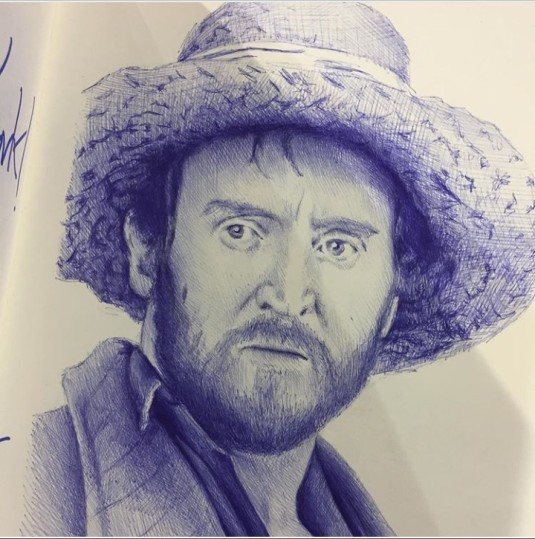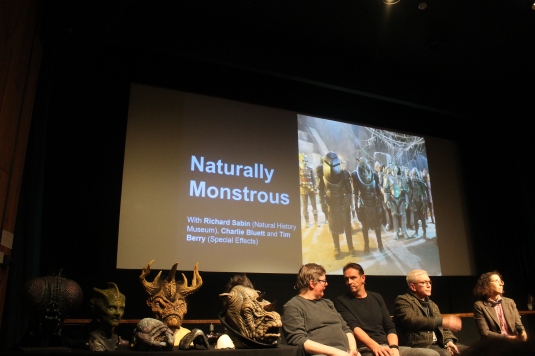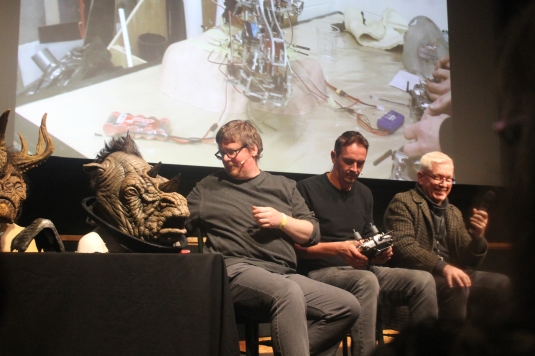
Above: Doctor Who memorabilia, image credit The Doctor Who site.
Is Superfandom money and talent-centric?
By Mélissa M Azombo – Support the author
I’m on the set of Doctor Who during one of those lulls when we are waiting to be called in for the next scene, when one of the other extras told me he had been in the newspapers as a kid for owning the biggest Doctor Who collection.
“Impressive!” I thought. “That’s really cool,” I responded. He must really like Doctor Who and it is amazing that he not only enjoyed the show enough to want to collect so much, but that he was able to. He is what the media would have termed a “Superfan”. Unfortunately, his name escapes me. This was way back in the summer of 2016, after all. While I wish him well wherever he is, I also wonder whether he would have agreed with that terminology.
See, I have seen many examples of fans photographed with their collections and artwork and called superfans but I wonder if this always feels like an accurate fit. Do they, themselves feel like superfans or regular fans? And what makes the distinction? I wanted to unpack what it meant to be a Superfan a bit further.

Above: Snapshot from BBC documentary Tom Felton Meets The Superfans
The best place to start when you want to know the meaning of a word is always of course, the dictionary. The Oxford online dictionary defines a Superfan as “a fan especially of a sports team, who admires somebody/something or enjoys watching or listening to somebody/something, more than usual.” While Doctor Who may not be a sports team, instead the longest running sci-fi TV show, I think I can still use this definition as a barometer against which to calibrate Superfandom.
First, I need to set a baseline for “usual”. Is this Countdown? Because off we go to the dictionary corner again. According to the same dictionary, usual means “that happens or is done most of the time or in most cases”. This sets the baseline for usual fandom at: ways of enjoying a franchise that are the most accessible. In the case of Doctor Who for example, that would be simply watching each episode from when it aired. Anything beyond that, such as watching episodes multiple times or investing further in the show in other ways, would bring you towards the Superfan side of the spectrum.

Above: A Doctor Who collection of Daleks, a TARDIS, figures and more. Image credit: The Doctor Who site.
This means that my fellow extra from earlier would categorise as a superfan. Does this mean that anyone who does not own even one Doctor Who Funko Pop, could never dream of qualifying as a superfan? Owning a huge collection is in large part, money based. Whilst it is arguably unfair to dismiss those who would never be able to afford such a collection, it is also not right to dismiss the passion for the show someone must have, to want to do this in the first place. The collector has rightfully earnt their place as a superfan (as long as it’s not just because they couldn’t shift the latest limited edition blu-ray for £1000 on e-bay, after all). Perhaps this just seems like the main representation we get of the superfan. Others are acknowledged in media, though.

Above: Cosmic Doctor: The 11th Doctor fan at by Alice X. Zhang.
The superfan is sometimes in the media for their fan art. With Doctor Who’s deep history, there is lots to draw inspiration from to create hand drawn, painted or even digital artwork. Spend just a few minutes scrolling through Twitter and you will see a plethora of talent emanating from your screen.

Above: A work of art: A pen drawing of Vincent Van Gogh as portrayed by Tony Curran in Doctor Who episode Vincent and The Doctor. Artwork by BethanApple on Instagram.
The talent of Doctor Who fans will astonish you. These fans show that their enjoyment of the show sparks their creativity, prompting them to take their fandom beyond just watching the program.

Above: The Doctor Who Series 4 steelbook cover artwork designed by Sophie Cowdrey (@sophiecowdreyart on Instagram)
From The Doctor in her various incarnations to her companions or cross-era mash-ups, for example The 8th Doctor with Bill Potts, there is an array of fantastic artwork from fans. This can give them more material to practise their craft enough to even work on the show one day in an artistic capacity, as Sophie Crowdrey who designed the Doctor Who Series 4 Steelbook did.
There is no way in which these fans have not earnt the “Superfan” title. It’s still important to note though that artwork is money & resources dependent. It also depends on being able to draw. The concept that someone who does not have the funds or resources to produce this art or can not draw could not be a superfan, just does not ring true.

Doctor YouTube Channel Timey Wimey Poductions
What about something more inexpensive like running a blog or a successful YouTube or Vimeo channel? Possibly even a successful social media account? Blogs not only take a lot of time and effort to run and promote, they employ a vast skillset. Bloggers need to research and innovate to come up with original articles you will enjoy reading. In the case of writing about a topic the rest of the Doctor Who fandom is already aware of, they need to be quick to beat the rush of every single other Doctor Who Blog writing about it or use a different angle that would warrant a later publishing date.
There is a lot to take into account from photography to logos and website design, as well as interviewing people, given the chance. This is definitely something not done lightly. Most times, this is a hobby fans are trying to squeeze in around their day job that they do not get paid for, with no guarantee anyone will read it at first.
Similarly, YouTube channels and social media accounts have no guarantee of ever being viewed by anyone. The amount of time, energy and creativity fans put into editing videos for, be it YouTube or DailyMotion and perfecting posts for Instagram or Twitter, is definitely a match for a superfan. But when it comes to success, this is tied to likes & impressions in the mediasphere. It’s a numbers game! By that logic, this level of dedication to the show means nothing to your superfan status if you don’t have thousands of likes and followers. Ouch! Sounds harsh.
Also a numbers game and perhaps the most symbolic of a superfan, is autograph & photograph collecting. The autograph & photograph hunters have been synonymous with the term superfan for ages and it’s quite an expensive hobby to keep up.
With conventions increasing in price, along with auto and photo prices, this is not exactly accessible to everyone. But it doesn’t actually have to be expensive. You can go to stage door for free and try to get a photo or auto from your favourite actor if they come out. You might be able to do the same outside red carpets, some of which are wrist-banded to restrict the number in fan areas.
Of course, if you are just after an autograph, you might actually be able to get one for the price of a stamp – well, 2 stamps. You can send fan mail to the agency of the actor of your choice and enclose a stamped SAE (self-addressed envelope), so that they are able to send you a response, including an autograph, if you request one!
While these last methods dramatically take the cost of this activity down, it is still exclusive. The latest figure from l’INSEE (L’Institut National de Statistiques et des Etudes Economiques) reflects that the amount of people in poverty is 14.2%. For such people, the cost of a stamp may be too much, let alone 2 stamps or trying to get into a convention. Unfortunately, being a Doctor Who fan does not automatically grant someone a magic money tree from the Universe.
Just finished working on an article for you all that should be out next week. That can only mean 1 thing… time to get to work on the next one! For this, it will be so much better with YOUR participation, so RT & answer below:
👇What is a Superfan?#DoctorWho #Fan #Fandom #HP
— Un Temps de Fraises – Time Made Of Strawberries (@GoldenWho) April 30, 2020
So, who is the superfan in all of this? Is it the collector? Is it the artist? Is it the fanfiction writer or is it the person who has watched lots of episodes multiple times and can tell you a thing or 2 about them from the top of their heads? It turns out that the superfan is all of these examples. As far as being a superfan goes, you don’t have to have all the money in the world to collect every photograph, autograph or figure. You don’t have to be able to draw or write or even have defined success on your Doctor Who social media account. You just have to enjoy the show, in a more than usual way. There is more than one way of being a superfan, even a free one…









